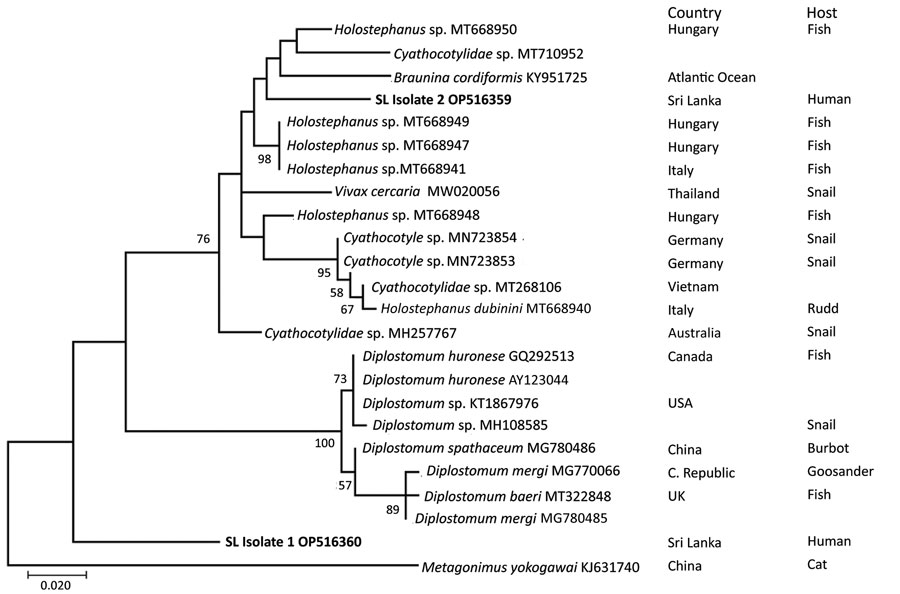Volume 29, Number 4—April 2023
Dispatch
Ocular Trematodiasis in Children, Sri Lanka
Figure 2

Figure 2. Phylogenetic analysis of isolates from 2 episcleral nodule isolates from the eyes of pediatric patients in study of ocular trematodiasis in children, Sri Lanka. Genomic DNA was isolated from biopsy samples from 2 patients. PCR was used to target the trematode internal transcribed spacer 2 (ITS2) gene, which was then sequenced. Maximum-likelihood analysis was used to construct a phylogenetic tree containing partial sequences of isolate 1 and 2 (bold font) from Sri Lanka and 24 taxa from GenBank. Partial ITS2 gene sequences were aligned by using MEGA version 10.2.4 software (https://www.megasoftware.net). Numbers near nodes indicate the percentages of 1,000 nonparametric bootstrap pseudoreplicates (>50). GenBank accession numbers are provided for ITS2 gene reference sequences. The sequences for the 2 isolates from this study were deposited in GenBank (accession nos. OP516360 and OP516359). Metagonimus yokogawai (KJ631740) isolated from a cat is included as the outgroup. SL, Sri Lanka. Scale bar indicates nucleotide substitutions per site.